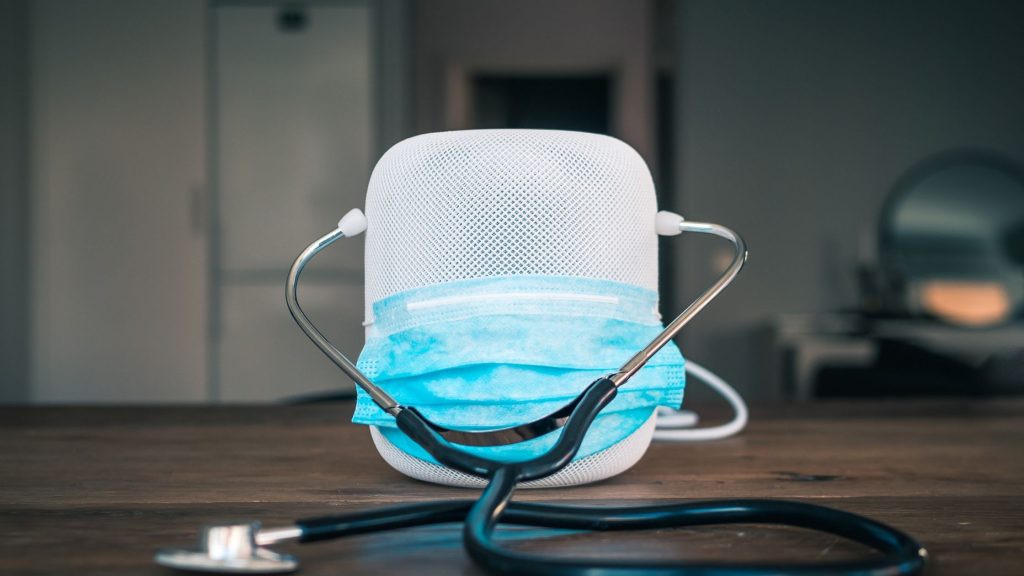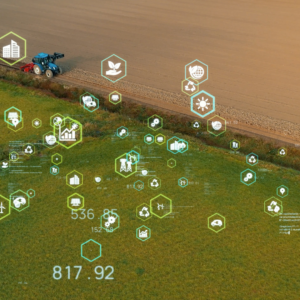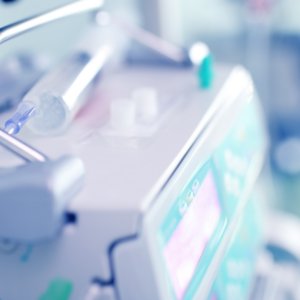As the global pandemic continues to wreak havoc on healthcare systems globally, remote consultations, virtual care and follow ups are becoming increasingly commonplace. Broadly referred to as telehealth or e-health, e-health technology methods are helping healthcare providers and medical staff better respond to the needs of those that have contracted the virus. Equally, these tools are helping providers keep facilities as accessible as possible for patients with other needs.
During the pandemic, telemedicine is emerging as an effective and sustainable solution to stem the spread of the virus and protect healthcare workers. By connecting patients, physicians and systems, these tools are enabling everyone – especially those with symptoms – to communicate and provide care safely. In addition, governments and institutions are urging the public and healthcare professionals to utilize these solutions for non-urgent communication, reducing pressure on hospitals and clinics.
However, telehealth services have potential far beyond virtual health consultations. Indeed, a properly integrated e-health system could incorporate telecommunications, patient data, diagnostics, and interdepartmental and facility communication. What is required is the correct tools – which considering the benefits of telehealth technology, this question is most certainly worth our attention.
Table of Contents
A longer term solution for hospital capacity
Telemedicine is in the spotlight as a potential solution to reduce pressure on hospitals and doctors’ clinics in the long-term. Virtual care is making a very positive contribution to the healthcare system during the pandemic and healthcare professionals are utilizing these tools in a variety of situations.
For instance, telemedicine is being used to forward triage patients long before they arrive at the hospital or clinic. This frees up time and reduces risk for frontline staff, who can divide patients into high and low risk groups before they attend the emergency room. Then, appropriate measures can be put in place to minimize the risk to healthcare workers and other patients.
Moreover, and very importantly, e-health technology solutions mean that many patients with chronic illnesses can access healthcare from home. With the right tools, this can extend from consultation to prescription deliveries and remote monitoring. Obviously, this minimizes their risk of exposure to the virus and enables doctors to maintain close contact with patients that require consistent care. This isn’t only useful for doctors and healthcare providers, but gives patients with complex needs extra assurance during a trying time. Going forward, it makes healthcare more convenient for those that would normally have to make frequent hospital visits, saving them time and energy.
A further advantage is, of course, cost. Currently, the average cost of treating non-emergency conditions, like bronchitis, flus, and dizziness in A&E units costs roughly $1,800 USD more than addressing these conditions in primary care settings. By using e-health tools, patients can receive the appropriate level of care for their condition at a reduced cost. Equally, telemedicine augments the decision-making process; instead of rushing to the emergency room, patients can have a preliminary visit with a virtual health professional, then take appropriate action from there.
The limitations implementing e-health technology
However, these tools, in their under-evolved iterations, come with limitations. Despite the sense of urgency instilled by the coronavirus pandemic, many large healthcare providers, insurers and policymakers remain poorly informed about e-health technologies. It’s only until now, deep into the second wave, that they are beginning to realise that these tools are essential solutions to keeping the pandemic under control, and importantly, to better manage public health emergencies in the future. Despite the clear advantages of remote health services – namely taking pressure and risk off healthcare staff and protecting the public – obstacles remain.
Primarily, many hospitals and private practices don’t have access to the most up-to-date applications and hardware. Although the concept of telehealth has been around for decades – in Canada in 1959, radiologists were offering telemedicine diagnostic consultations via coaxial cable – many general practitioners and smaller hospitals won’t have the setup beyond Zoom calling.
A main obstacle is the lack of endpoints within hospitals that can integrate telehealth technology. For instance, while some facilities will have dedicated technology in certain departments like stroke care, these facilities won’t exist in others. Indeed, some hospitals have repurposed this technology for tele-triage; but while many programs are hardware-agnostic, hospitals still need to ensure that the e-health technology is right for the job. Although many facilities don’t necessarily need leading-edge technology – especially when they have legacy programs to contend with – quality equipment inevitably enhances patient experience.
This brings us to the second challenge, which is one that looms large in almost every aspect of hospital modernisation: integration with legacy systems. Of course, hospitals are obliged to maintain these systems as it is essential that patient information is stored for a decade or more, depending on the jurisdiction. However, not all this information can be migrated to the new system, because many legacy programs and databases were specifically designed to meet the needs of the time. Occasionally, these needs were even hospital-specific or department-specific. This makes reconciling data no mean feat, and oftentimes arguably a waste of human and financial resources.

A further barrier is quite basic – access to reliable broadband. Vital hospital equipment relies on the presence (or indeed absence) or certain frequencies, so some units run disjointed or poor quality connections. In the context of the pandemic, routing a reliable Internet connection to an outside tent or other type of temporary facility is a challenge in itself. Equally, in some jurisdictions, there’s simply a lack of investment in high speed Internet access, which makes installing high-speed broadband prohibitively expensive.
The final hurdle is human. Change often faces resistance as a reconfiguration of hospital systems, processes, and protocols will come with a parallel restructuring of mindsets. The challenge here is huge: attitudes need to be changed, habits need to be broken, and senior consultants who have been using the same technology for nigh-on decades need to be persuaded to adapt. This requires very specialised and empathic change management, which it’s often necessary to draft in external experts.
Occasionally, this restructuring of personnel is literal as well as metaphorical. In a commentary for a 2007 issue of Healthcare IT Management, the CIO of France’s Arras Hospital said that a legacy systems overhaul at his hospital was “a major undertaking in its own right” and didn’t seem plausible “without a parallel re-structuring of the organisation’s internal processes and a change in its culture.”
Addressing these challenges with a single e-health technology tool
However, the tech sector is stepping up to the plate when it comes to meeting the complex and evolving demands of the healthcare sector. Fast Healthcare Interoperability Resources (FHIR) is an innovative tool that standardizes the description of data formats and elements, alongside an API for exchanging electronic health records. This technology was developed by the non-profit Health Level Seven International (HL7) in an effort to empower global health data interoperability.
FHIR builds on legacy format standards previously developed by the company, including HL7 versions 2 and 3. However, this new e-health technology tool is easier to implement than previous releases because it uses a more modern web-based suite of API technology, including an HTTP-based RESTful protocol, and good old-fashioned HTML and CSS for interface integration. Equally, users have options when it comes to data representation: they can choose from JSON, XML or RDF and Atom for results.
This provides an alternative to document-centric platforms by positing discrete data points as services. For instance, the fundamental data components of healthcare operations – patients, admissions, diagnostics and medication – can be retrieved and manipulated via unique resource URLs. Furthermore, because FHIR expands on previous versions and the HTTP secure protocol, messages can be analysed by wire data.
With this capability, hospitals can gather data in real-time from specified segments as they pass through the network. These data can be funnelled into a data storage architecture where it can be cross-referenced with other data. A potential – and very timely – use case is epidemic tracking, where healthcare providers can check the pattern of admissions against patient records.
Naturally, the use of nothing that’s really that new-fangled is intended to fully facilitate integration between legacy healthcare systems and new platforms. This makes it easier for healthcare providers to access patient records on a wide variety of devices, from computers to tablets and mobile phones. In the context of the pandemic – where the temporary structure with poor connectivity is becoming ubiquitous in healthcare settings – this functionality is invaluable. It also provides an inroad for useful third party apps, so doctors can make their consultations and care smarter still.
This also eases some of the pressure in terms of buy-in, where staff aren’t presented with anything excessively unfamiliar or alienating. They can access information on their mobile devices in a recognisable format, alleviating resistance and smoothing over the transition process. Looking to the future, tools like FHIR are essential to making e-health offerings comprehensive and effective, linking touchpoints in systems (and that includes the human element) to offer the best possible patient experience and streamlining costs and operations in the process.
Uptake in the healthcare sector
A number of high-profile organisations in the healthcare IT space have shown interest in experimenting with this technology. These endorsements come right from the top: today, the US Centers for Medicare & Medicaid Services (CMS) have issued their Interoperability and Patient Access final rule. This made the use of FHIR mandatory for several CMS-regulated organisations, including state Medicaid programmes and qualified health plans in the Federally Facilitated Marketplace.
Equally, there is interoperability between FHIR and the third-party commercial sector. At the beginning of 2018, Apple announced that its integrated iPhone Health app would allow users to view their FHIR-compliant medical records, should their healthcare provider choose to make them available.
Since, the standard is being widely adopted further afield. In Europe, HL7 has a long-established hub. Interestingly, GDPR has given FHIR a further boost in the eurozone, as FHIR Consent Directives help data processors and holders effectively label items, making the auditing process more efficient and effective. Meanwhile – as implied by the functionality provided by Apple – patients can access and view their own data, which fits neatly into GDPR’s transparency requirements.
This year, the Brazilian Ministry of Health initiated the development of one of the world’s largest platforms for national health interoperability, dubbed the National Health Data Network. This nationwide system uses HL7 FHIR r4 as a standard across all of it’s systems, creating a fully integrated patient data system for Brazil.
An integrated system for the future of e-health services
The global pandemic has demonstrated that expanding e-health technology capabilities is essential. In our current context, remote health monitoring is crucial to keeping patients and staff safe: symptomatic patients are discouraged from attending facilities unless they absolutely have to, and if they do need medical attention, they can be triaged before they even arrive at hospital. Meanwhile, patients that require other care can be attended to without putting them at risk.
Looking to the future, telehealth services present a solution for other pressures that healthcare providers face. From reducing the pressure on hospitals and clinics to providing better value care, these solutions can help both public and private providers make their services more streamlined, for the benefit of the organisation and patient.
It’s an ambitious target, but the tools are already there. With solutions like FHIR, hospitals can finally integrate legacy systems with modern technology to facilitate ease of access to patient records, diagnostics, and other data, across departments and institutions. Equally, the open source nature of this technology empowers the patient as much as the healthcare provider, as they can view their own records remotely with the relevant app. The pandemic has proved that comprehensive e-health services are an urgent project – and the solution is just over the horizon.
Sourcing the right experts for the job
Digital transformation such as this requires an expert team. To make the transition with agility, efficacy, and expertise, healthcare providers should look to the rich pool of freelance talent to implement e-health technology strategies. Outvise is a curated platform for TMD and digital professionals, with specialists including change management specialists, IT architects, project managers, and dedicated healthcare solution designers. Explore the certified portfolio of professionals here.
Seasoned marketing professional with 13 years of international experience working in hospitality, financial, technology, retail industries and consumer brands.
FTTH Council Europe Women in Fibre Committee Member.






No comments yet
There are no comments on this post yet.